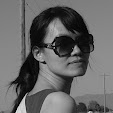[IRAN] Naqsh-e Rustam

Naqsh-e Rustam ,“Carved Representations of Rostam”, is one of the most important archeological sites in Iran and contains monuments of the Achaemenid and Sasanian dynasties. Many of the rock carvings show triumphant Iranian horseman and were attributed to the Iranian National Hero Rostam. The Persian Achaemenids built a fortified wall in front of the cliff, and erected a stone tower and prepared elaborate rock-cut tombs for Darius the Great and his successors: Xerxes, Artaxerxes and Darius II. From A.D. 224, the Sasanians who claimed Achaemenid heritage, chose the site as a national shrine, and carved there rock relief, inscriptions and tombs.

Arriving at the archeological site of Naqsh-e Rustam.


From ancient times, a stream and a road run in front of the cliff, giving it an air of sanctity.


Also known as the Persian Crosses, four tombs of the Achaemenid kings carved out of the rocks face in a shape of the cross high above the ground. The center of each cross which opens to a small chamber is where the great kings of the Persian Empire was laid to rest

Below the tomb of Darius the Great shows a double register two victories of Bahram II.

The Triumph Relief of Shapur I. This rock relief was carved to the lower left of the tomb of Darius the Great. It represents Shapur I on horseback grasping the right wrist of a Roman emperor standing before him while receiving the submission of another Roman emperor who is kneeling before his horse. This is the most famous of the Sassanid reliefs as it depicts the victory of Shapur over two Roman emperors.

Tomb of Xerxes.

This is the tomb of Artaxerxes. Below the tomb is carved a double panel relief, the upper register of which is almost destroyed and the lower shows the triumph of Hormozd II over a mounted foe.

This is the tomb of Darius II. The façade of all these tombs are sculptured in the same way: representations of thirty subject nations carry on their hands the monumental royal throne on which the king stands in front of a fire altar and under the wings of a bird-man who symbolises his royal glory.

Opposite to the rock-cut tomb of Darius II, stands a magnificent stone tower which is known as “Ka’bah of Zoroaster” which was built during the Achaemenid period.

It must have been an important structure since Shapur I carved on its lower walls a trilingual inscriptions in which he recorded his genealogy, the extend of his empire, the victories he won over three Roman emperors and also the name of his family members and courtiers and the religious endowments he had established for them.


A water basin has been excavated at the foot of the mountain. The shape is octagonal with irregular sides but the workmanship and the care taken in cleanly excavated features indicated that it had a significant function.


The Investiture of Ardashir I (AD 224-39). Ardashir was the founder of the Sasanian empire. The scene here shows Ardashir on horseback and to his right, Ahuramazda, also mounted.

The rock-cut tombs and carvings are fascinating to see and it’s a definitely worth visiting after one had visited the Persepolis.

Lunch was at a buffet restaurant.


After refreshing ourselves with lunch, we continued to travel to Esfahan.




Sceneries along the journey through the desert was breathtaking.

Finally we arrived in Esfahan for the night.

We had a relaxing traditional Iranian dinner at the hotel rooftop restaurant.

One of the tour member from Australia posed with my son.

The dinner was delicious and the company was great.


We retired for the night after dinner and a long travelling day.




![[MALAYSIA] How To Do A Self Guided Walking Tour in Kota Kinabalu](https://blogger.googleusercontent.com/img/b/R29vZ2xl/AVvXsEgR_cJjX4Shl9rsz0ufzxjmtLMq5PAvmTNDHypSVV2CYDaarZVj8EMznRkXqdVeCGg2yEMdFqPtI5rvrmMtJVSL1W9jqOtdCM2EFAc5ZTWn7XzPQV5sqS4s1DO0T_AuF0nq_dLQ53b9-ju3yyLJUrvU2TlhbmD4rDDV5-aPFaT2WEQZ1c257JXGUhyfsw/s72-c/20220524_131141.jpg)
![[FRANCE] My Favourite Paris Eiffel Tower Photo Spots](https://blogger.googleusercontent.com/img/b/R29vZ2xl/AVvXsEi220KHLfBDpyO53KorHwAb0KQEuiiaVDlrFYwEEAvs8YvKb-Edmyt7Hl7rZszN6qc-GM4e3SmjBS2pUiCiv8ljl8mnrUR93Ljxb0xGrSZ4sZLPRErpbAj29btKvnIC67xV93iKnrH3QRcc/s72-w781-c-h505/DSCF4372.JPG)
![[JAPAN] Osaka Universal Studio](https://blogger.googleusercontent.com/img/b/R29vZ2xl/AVvXsEilW88BKY24KkvC4WjRfTktmxFmylxMsDD8emYT93x8bOlgqzMV1feAp28Si_GPn3hyFD2E97CMmP3X6kceDfFa9WB_7qr2BFvmu20iVJRaNlZd1BfoyUUj5ZgofOgK5lZGoqVDS4-1YLTo/s72-c/?imgmax=800)



![[MONACO] How To Visit Monaco In One Day From Nice](https://blogger.googleusercontent.com/img/b/R29vZ2xl/AVvXsEgZkJeVAOmz4LTRwY2uDTK131UJVUWH_44GUUU3H-ni63dK2BlNqITBIh5Tdcpz9kXTUb7ePW7f-PQ1Y7E6B4lnqKEHs_nL3Eop-ouoFhxayMI4lNCcUG-oJnGMVwpGDlBu8lfgn10H_QHw/s72-c/DSC06605.JPG)
![[MOROCCO] My Day Trip to Blue City of Chefchaouen From Fez](https://blogger.googleusercontent.com/img/b/R29vZ2xl/AVvXsEh-7PIqgkIbF1BtTIOwfZ2R611OUrvV7f4Uxih57is62V_QD_DySCdifgR250MMruySrRmV7UMQ14iRsQZ6ifAaAWTqYacWSu__Lpm6QuqEjUcMZ4IJz-0SLDKeCV-nn6Zk1qbyMtMaZf4YupMArl4gXmmXoQUxHc6T-_eW-X2jvjh47rlu4Ddq4_Q48g/s72-c/DSC07946.JPG)
0 comments: